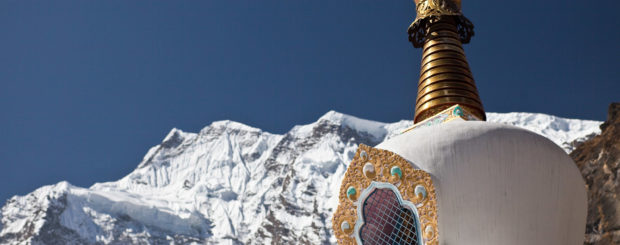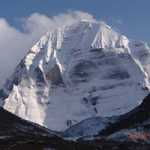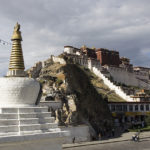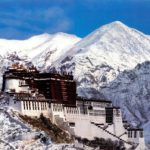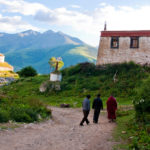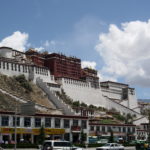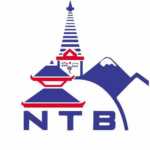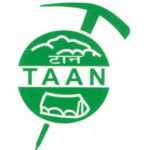Milarepa Trek (Shishapangma) & Lhasa Tour
Milarepa Trek (Shishapangma) & Lhasa Tour
he high altitude walk is a little easier as there are no major passes to ascend. However, the landscape and scenery along the way rivals any other Himalayan Trek. The lack of other tourist along the way also makes this journey even more rewarding. The beautiful weather during the day, yet rain at night, allows for a wondrous walk through lush meadows and blossoming wildflowers. Milarepa Cave in Nepal is on the Annapurna Circuit at approximately 4000m just outside of Manang. It is credited to have been the residence of the famous Saint Milarepa during his stay in modern-day northern Nepal.
After our awe-inspiring trek we will visit the historic city of Lhasa. This wondrous city is generally regarded as the heart of Tibet and is filled with unparalleled history, culture, and beauty. The Potala Palace dominates the skyline with its powerful and ancient architecture. The numerous temples and monasteries surrounding the city, such as the Jokhang and Drepung, allow travelers to experience Tibetan Buddhism first hand. A visit to these ancient monasteries will leave you with a sense of astonishment for years to come! Stops will be made along the way in the small towns of Gyantse and Shigatse. Allow yourself to relax in these extraordinary towns and immerse yourself in the rich Buddhist culture. You can learn a lot from these Tibetan people. It will be even easier to enjoy Tibet as nothing but the best Tibetan hotels will be provided for you.
About Milarepa Trek (Shishapangma) & Lhasa Tour
Tour Facts
- 13 Nights / 14 Days Trekking & Tour starting from Kathmandu, Nepal
- Himalayan Trek and Lhasa Sightseeing and Cultural Activities
- Kathmandu – Milarepa Trek – Lhasa Tour
Cost
See Cost Tab above for Details
Registration Process
- Fill out Booking form (Click Here) and email it to us at kailashtour@KailashJourneys.com
- Scanned passport copies (Colored copied is required for Non-Indian Passport Holders)
- Advance payment: USD 300 / INR 15,000 per person. Payment Options
14 Days Itinerary of Milarepa Trek (Shishapangma) & Lhasa Tour
Day 01: Drive Kathmandu – Nyalam (3780 m)
Early in the morning drive to Nyalam.
Day 02: Rest day in Nyalam
Today we spend a rest day in Nyalam in order to acclimatize before heading up higher. A short way out of town there is a small temple, Nyalam Pelgye Ling, which is associated with the eleventh- and twelfth-century poet lama Milarepa.
Day 03: Trek to Draabochhan (4110 m)
On the first day of trekking tour we head towards Draabochhan along Tshongde Phu river valley. We trek around this valley and rest in the camp.
Day 04: Trek to Shingdip (4560 m)
Today we start by climbing to the top of a ridge. From the summit we walk to the ridge along some nice hills that are covered in dwarf rhododendrons. We end the trekking in Shingdip, a beautiful meadow camp with a large boulder near the junction of converging moraine valleys.
Day 05: Trek to base camp (4980m)
From Shingdip we take a cross-country route west towards the Base Camp. We reach the base camp by a little glacial lake after a two-hour walk. Shisapanga is out of view from base camp, so we head towards the high base camp. There are magnificent views of Shisapanga on a boulder-plateau above base camp.
Day 06: Trek to Draabochhan (4110m)
Today we walk all the way down to Draabochhan, a trek that offers outstanding views of Jugal Himal. We walk through the beautiful alpine meadows and the dwarf rhododendrons on the hills. After a long descent we once again use the herders’ camp in Draabochhan.
Day 07: Trek to Nyalam (3780 m)
Today we reach lower and more fertile ground in the Tshongde Phu river valley just before we head back to Nyalam.
Day 08: Trek to Herder’s Camp
Today’s drive takes us from the lush, green lower hills into the dry and arid landscape of the Tibetan Plateau. We cross several high passes including the Lalung La [5,050m], which, offers the most breathtaking panorama of the Himalayan range including Mt Everest – a fitting backdrop to the vastness of the Tibetan Plateau.
Day 09: Drive to Shigatse (3900m)
Continuing along the Friendship Highway, we pass lonely monasteries and the camps of nomadic herders. We then cross the highest pass of our journey, the Gyamtso La [5,220m] before descending once more to the barren splendour of the plains. Tonight we stay in Shigatse, the second largest city in Tibet.
Day 10: Drive to Gyantse (3950m)
This morning we will visit the Tashilhunpo Monastery, one of the largest functioning monasteries in Tibet, before setting off on the relatively short drive to Gyantse. Once in Gyantse we can explore the Pelkor Chode Monastery and the Gyantse Kumbum. The Kumbum is a large gold-domed stupa and its many chapels house an impressive array of Tibetan Buddhist murals.
Day 11: Drive to Lhasa (3650m)
This spectacular drive takes us over the Karo La [5,045m] for the awesome sight of a huge glacier tumbling down. Beyond the small, developing town of Nagartse the road follows the bank of a beautiful turquoise lake, the Yamdrok-tso. We then cross the Khamba La [4,794m.] and continue on to Lhasa.
Day 12: In Lhasa (3650m)
After breakfast we will drive you to visit the Sera Monastery, Norbu Lingka and Jokhang Monastery.
Sera Monastery: Sera Monastery is one of the three largest monasteries of Gelugpa, sits at the foothills of Tatipu and the next two are Drepung Monastery and Ganden Monastery which both have longer histories. Sera, in Tibetan, means “Wild Rose Garden” since opulent wild rose woods once grew around it. It was founded in 1419; the site occupies nearly 12 hectares, comprising the Tsokchen (Great Hall), 3 tratsangs, and 30 khangstens. Sera Monastery is one of the best-preserved monasteries in Tibet.
Norbu Lingka: Situated in the western suburbs of Lhasa, Norbu Lingka was built in the middle of the 18th century during the reign of the 7th Dalai Lama and served as the Summer Palace of Dalai Lama where they handle political affairs, practiced religious activities and spent holidays. Traditionally the Dalai Lamas would leave the Potala Palace every spring and spend the summer in Norbu Lingka.
Jokhang Monastery: Built some 1300 years ago, Jokhang is probably Tibet’s first religious institution. This temple is considered as one of the holiest shrines in Tibet. Pilgrims come from all over the world to pay homage to this temple. Located in the heart of Lhasa’s colorful Tibetan quarter, Jokhang is the spiritual center of Tibet and also the heart of Lhasa.There is a golden statue of the Buddha Shakyamuni in the temple, which was brought here by the first wife of Songtsen Gampo.
Day 13: In Lhasa
This morning we will visit the Potala Palace and the Drepung Monastery .In the evening you can scroll around the local market.
The Potala Palace: The Potala Palace, winter palace of the Dalai Lama since the17th century, symbolizes Tibetan Buddhism and its central role in the traditional administration of Tibet. It is built on the red mountain in the center of the Lhasa valley at an altitude of 3700 m. The Potala Palace is the world-renowned symbol of Tibetan Buddhist culture.
Drepung Monastery: Drepung Monastery, the largest and richest monastery in Tibet, was founded in 1416 by a disciple of Tsong Khapa under the patronage of a noble family and later enlarged by the Fifth Dalai Lama. Drepung, which means rice heap in Tibetan, lies 8 kilometers west of Mt. Gambo Utse. The monastery covers a floor space of more than 200 thousand square meters. At its peak, it had a registration of more than 10,000 thousand monks. Many high and learned lamas had studied here.
Day 14: Lhasa to Kathmandu Fly
In the morning drive to Lhasa Airport and then fly back to Kathmandu.
Contact Us
Cost Includes
- Assistance in acquiring the Chinese visa
- All the necessary Tibet travel permits
- Pick up and drops from airport or train station and hotels
- Everest National Park admission fee and Grass dame charge
- Transportation from Kathmandu to Tibetan borders in a comfortable private vehicle and from Tibetan borders to Lhasa on Land Cruiser 4WD Toyota(No AC) or Hiace or bus
- Accommodation in Tibet on twin-sharing basis with breakfast
- English speaking, trained and experienced Tibetan guide
- All fees for sightseeing and visits to monasteries as outlined in the itinerary
- All applicable taxes and service charges
Cost Excludes
- Accommodation in Kathmandu
- Chinese visa fee which is US$ 175 for the US nationals and US$ 85 for other nationals (visa fees subject to change without prior notice)
- International flights to Kathmandu and out of Lhasa
- Travel insurance
- Meals other than breakfast in Tibet
- Tips for guides and driver
- Nepal visa
Testimonials
 5 Star · "We (Family of 3) chose Kailash Journeys for our Kailash Mansarovar & Muktinath trip in May. Started initiating discussions with Mr.Kalyan Parajuli at the start of the year and Mr.Kalyan was prompt in answering all the queries. The accommodation provided at Kathmandu & Nepalgunj was good and the representatives of Kailash Journeys at each transit point in Nepal ensured smooth transition to our next destinations. Once we reached Tibet, the sherpas team lead by Mr.Rajkumar and Mr.Lama Babu took complete care of us. Personalized attention was provided to everyone. Without the guidance and help of the hardworking Sherpa team, it would have been difficult for me to complete the 3 day parikrama. On the way back from Tibet, the management team ensured that we complete our trip and reach Kathmandu on schedule....Overall it was a very well organized trip by Kailash Journeys. Recommended.
Review on Facebook
5 Star · "We (Family of 3) chose Kailash Journeys for our Kailash Mansarovar & Muktinath trip in May. Started initiating discussions with Mr.Kalyan Parajuli at the start of the year and Mr.Kalyan was prompt in answering all the queries. The accommodation provided at Kathmandu & Nepalgunj was good and the representatives of Kailash Journeys at each transit point in Nepal ensured smooth transition to our next destinations. Once we reached Tibet, the sherpas team lead by Mr.Rajkumar and Mr.Lama Babu took complete care of us. Personalized attention was provided to everyone. Without the guidance and help of the hardworking Sherpa team, it would have been difficult for me to complete the 3 day parikrama. On the way back from Tibet, the management team ensured that we complete our trip and reach Kathmandu on schedule....Overall it was a very well organized trip by Kailash Journeys. Recommended.
Review on Facebook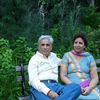 "Kailash Journey is the best tour operator for Kailash Mansarover Yatra. Their whole team is very co-operative, especially Raj Kumar, Lamba and Paras Mani. I would like to go once again with u."
View this Review on Facebook
"Kailash Journey is the best tour operator for Kailash Mansarover Yatra. Their whole team is very co-operative, especially Raj Kumar, Lamba and Paras Mani. I would like to go once again with u."
View this Review on Facebook 5 Star · "Amazing travel experience with the professional and dedicated team of Kailash Mansarovar Yatra with Kailash Journeys Pvt. Ltd Team. Very hospitable staff with professional medical aid services and good food along with the scenic beauty of Mount Kailash , makes the trip memorable. Whole hearted thanks to Kailash Journeys Pvt Ltd." Review on TripAdvisor
5 Star · "Amazing travel experience with the professional and dedicated team of Kailash Mansarovar Yatra with Kailash Journeys Pvt. Ltd Team. Very hospitable staff with professional medical aid services and good food along with the scenic beauty of Mount Kailash , makes the trip memorable. Whole hearted thanks to Kailash Journeys Pvt Ltd." Review on TripAdvisor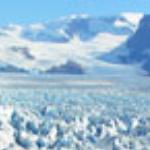 5 Star · "Mystic kailash - We were a group from India and returned after visiting kailash manasarovar .we went thro kailash journeys Nepal .they were too good more specifically the team .their team is the heart .team led by rajkumar in Tibet region were simply outstanding especially when other things like weather , terrain are difficult .i have just named one person but the entire team deserves compliment .the journey was filled with excitement and curiosity but must say its worth the last penny" Review on TripAdvisor
5 Star · "Mystic kailash - We were a group from India and returned after visiting kailash manasarovar .we went thro kailash journeys Nepal .they were too good more specifically the team .their team is the heart .team led by rajkumar in Tibet region were simply outstanding especially when other things like weather , terrain are difficult .i have just named one person but the entire team deserves compliment .the journey was filled with excitement and curiosity but must say its worth the last penny" Review on TripAdvisor 5 Star · My first darshan of Mount Kailas with "Kailash Journey Private Limited" - It was last year November when I decided to visit abode of Lord Shiva - Mount Kailash. I searched a lot on the internet to find out a good travel agent who can be reliable for this journey. I was so glad that I found Kailash Journey Private Limited. The team was very helpful throughout the journey. I would like to appreciate the entire Kailas crew who were very supportive and helpful. I would like to take this moment to give my special thanks to Mr. Laxman who work as porter in this organization. Though, every journey is a blessing from Lord Shiva, however, my journey to Mount Kailas and Lake Mansarovar wouldn't have possible without support from Laxman. The kailas Journey's crew that I met in Hilsa, were the most finest people I have ever met in my life. I would like to thank Mr. Lama Babu who shared his power bank with me, Mr. Kalyan Purajali and Sumanth who arranged all the logistics. All in all, these people made my journey a memorable one. Review on TripAdvisor
5 Star · My first darshan of Mount Kailas with "Kailash Journey Private Limited" - It was last year November when I decided to visit abode of Lord Shiva - Mount Kailash. I searched a lot on the internet to find out a good travel agent who can be reliable for this journey. I was so glad that I found Kailash Journey Private Limited. The team was very helpful throughout the journey. I would like to appreciate the entire Kailas crew who were very supportive and helpful. I would like to take this moment to give my special thanks to Mr. Laxman who work as porter in this organization. Though, every journey is a blessing from Lord Shiva, however, my journey to Mount Kailas and Lake Mansarovar wouldn't have possible without support from Laxman. The kailas Journey's crew that I met in Hilsa, were the most finest people I have ever met in my life. I would like to thank Mr. Lama Babu who shared his power bank with me, Mr. Kalyan Purajali and Sumanth who arranged all the logistics. All in all, these people made my journey a memorable one. Review on TripAdvisor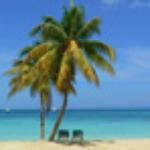 5 Star · "Very well conducted yatra by team of Kailash Journeys. Personal touch at each and every moment. in fact team was helping other groups." Review on TripAdvisor
5 Star · "Very well conducted yatra by team of Kailash Journeys. Personal touch at each and every moment. in fact team was helping other groups." Review on TripAdvisor 5 Star · This trip beyond exceeded my expectations! The all staff of Kailash Journeys (P) Ltd.is very good and specially Laxman who went above with us for entire parikrama. Best part of yatra was on schedule completion without any cut short and with convenience of entire group. Food served to us in entire yatra was really very good. It was fortunate to visit Kailash Yatra this May-June 2016 with a group of sixteen members from different places Uttar Pradesh, Tamilnadu, Andhra Pradesh, Gujrat, USA, Malaysia & Qatar. It was pleasure and satisfying to have a dip in Lake Manasarovar and a close look/darshan of Mount Kailash and by God's grace successfully completed Parikrama. The help and planning of Kailash Journeys (P) Ltd. has been great which made our trip very comfortable. The vehicles used, food served, guidance at every point and the help provided by sherpas has been very good. The document formalities, stay and sherpa service at every point has been exemplary. It really helped in smooth completion of Yatra. Last but not the least, a portion of the success of my yatra is purely because Kailash Journeys made sure this was a memorable experience. When you plan your trip with people who work from their heart, you know you are going to be taken care of. Simply surrender to Shiva and make this happen with the right people… I did!!! Om Namah Shivaya. - Vivek Singh +91-9785299906 - Review on TripAdvisor
5 Star · This trip beyond exceeded my expectations! The all staff of Kailash Journeys (P) Ltd.is very good and specially Laxman who went above with us for entire parikrama. Best part of yatra was on schedule completion without any cut short and with convenience of entire group. Food served to us in entire yatra was really very good. It was fortunate to visit Kailash Yatra this May-June 2016 with a group of sixteen members from different places Uttar Pradesh, Tamilnadu, Andhra Pradesh, Gujrat, USA, Malaysia & Qatar. It was pleasure and satisfying to have a dip in Lake Manasarovar and a close look/darshan of Mount Kailash and by God's grace successfully completed Parikrama. The help and planning of Kailash Journeys (P) Ltd. has been great which made our trip very comfortable. The vehicles used, food served, guidance at every point and the help provided by sherpas has been very good. The document formalities, stay and sherpa service at every point has been exemplary. It really helped in smooth completion of Yatra. Last but not the least, a portion of the success of my yatra is purely because Kailash Journeys made sure this was a memorable experience. When you plan your trip with people who work from their heart, you know you are going to be taken care of. Simply surrender to Shiva and make this happen with the right people… I did!!! Om Namah Shivaya. - Vivek Singh +91-9785299906 - Review on TripAdvisor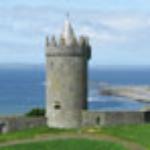 5 Star · June 30, 2016 · We are writing to tell you again what a pleasure it was being with you and your team. The Sherpas who were with us from your team (Rajkumar, Lamba, Laxman, Bahadur, Bhagman, Sagar) were so accommodating and very helpful. They were awesome. They took good care of each one of us from the batch; provided us with best of services and food at all times. Thank you all for your help. The Tibetan guide and driver for the bus arrangements you made for us were good.
5 Star · June 30, 2016 · We are writing to tell you again what a pleasure it was being with you and your team. The Sherpas who were with us from your team (Rajkumar, Lamba, Laxman, Bahadur, Bhagman, Sagar) were so accommodating and very helpful. They were awesome. They took good care of each one of us from the batch; provided us with best of services and food at all times. Thank you all for your help. The Tibetan guide and driver for the bus arrangements you made for us were good.
 5 Star · July 02, 2016 · Lake Manasarovar and KMY with Kailash Journeys Pvt. Ltd
Great experience to take a dip in the holy lake which is cold in summer season. Take care of the wind as it blows water into your ear. The trip with Kailash Journeys Pvt. Ltd is an excellent experience. The sherpas and the cooks were so awesome and friendly.
Visited June 2016
View this Review on TripAdvisor
5 Star · July 02, 2016 · Mount Kailash tour (KMY) with Kailash Journeys Pvt. Ltd
A great trip. Kailash Journeys made the trip experience so nice. First of all it is a yatra to the abode of Lord Shiva through difficult terrains in Nepal and then to the roof of world Tibet(China). Due to bad roads 2016 trips from Kathmandu were fully on flight modes in which we had to travel starting from airbus to dornair to helicopter. Kailash Journeys arranged the flights and accomodation in so nice manner that we were into the best possible places and best food facilities. While you do parikarma if there are old people in the group it is better to advice them to take horse because the terrian is really high and climate can change any point of time. There is no shelter if it rains also. Carry good clothing to make 2-3 layers in body, rain covers, shoes and windcheater. A dip in Holy lake manasarovar is also of great importance and our group was lucky enough to see the clear view of Mt. Kailash from lake itself.
Visited June 2016
View this Review on TripAdvisor
5 Star · July 02, 2016 · Lake Manasarovar and KMY with Kailash Journeys Pvt. Ltd
Great experience to take a dip in the holy lake which is cold in summer season. Take care of the wind as it blows water into your ear. The trip with Kailash Journeys Pvt. Ltd is an excellent experience. The sherpas and the cooks were so awesome and friendly.
Visited June 2016
View this Review on TripAdvisor
5 Star · July 02, 2016 · Mount Kailash tour (KMY) with Kailash Journeys Pvt. Ltd
A great trip. Kailash Journeys made the trip experience so nice. First of all it is a yatra to the abode of Lord Shiva through difficult terrains in Nepal and then to the roof of world Tibet(China). Due to bad roads 2016 trips from Kathmandu were fully on flight modes in which we had to travel starting from airbus to dornair to helicopter. Kailash Journeys arranged the flights and accomodation in so nice manner that we were into the best possible places and best food facilities. While you do parikarma if there are old people in the group it is better to advice them to take horse because the terrian is really high and climate can change any point of time. There is no shelter if it rains also. Carry good clothing to make 2-3 layers in body, rain covers, shoes and windcheater. A dip in Holy lake manasarovar is also of great importance and our group was lucky enough to see the clear view of Mt. Kailash from lake itself.
Visited June 2016
View this Review on TripAdvisor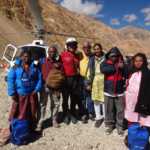 5 Star · April 30, 2016 · For us it was a great trip of a lifetime. It was possible only because of the team of Kailash Journeys Pvt. Ltd, who took all pains against all odds to see that all goes well with each and every traveler. A beautiful place with beautiful surroundings and feeling of freshness all around was made much more beautiful and comfortable because of the cooking team and the team guide Raj kumar throughout the journey.No words are enough to thank the whole team of Kailash Journeys Pvt. Ltd.Each one going on this trip must carry a camera, a walking stick, thermals ( 2/3 pairs minimum),a one litre flask and lots of sun screen (not less than 75 spf) and shoes with good grip.With full confidence in mind all can do this journey very comfortably with these tour operators. All the very best for all who are aspiring to go.
View this Review on TripAdvisor
DOWNLOAD FULL EXPERIENCE by Vani Kanchibotla
5 Star · April 30, 2016 · For us it was a great trip of a lifetime. It was possible only because of the team of Kailash Journeys Pvt. Ltd, who took all pains against all odds to see that all goes well with each and every traveler. A beautiful place with beautiful surroundings and feeling of freshness all around was made much more beautiful and comfortable because of the cooking team and the team guide Raj kumar throughout the journey.No words are enough to thank the whole team of Kailash Journeys Pvt. Ltd.Each one going on this trip must carry a camera, a walking stick, thermals ( 2/3 pairs minimum),a one litre flask and lots of sun screen (not less than 75 spf) and shoes with good grip.With full confidence in mind all can do this journey very comfortably with these tour operators. All the very best for all who are aspiring to go.
View this Review on TripAdvisor
DOWNLOAD FULL EXPERIENCE by Vani Kanchibotla 5 Star · May 26, 2016 · It was once in lifetime divine experience in Kailash Mansarovar Yatra. The staff of Kailash Journeys (to name a few....Mr. Kalyan Parajuli, Mr. Paras, Mr. Rajkumar and their team) made it easy, even against all odds, by their dedication and friendly approach.
I would say that if it is Kailash Mansarovar Yatra, then it has to be in hands of experts.... the Kailash Journeys.
Visited May 2016
View this Review on TripAdvisor
5 Star · June 12, 2016 · Kailash Journeys are a team of dedicated & concerned experienced professionals. We (family of 5) performed KM yatra in May'16 and it was a wonderful experience. Credit goes to people organising from office and brave Sherpas in our trip, leading from front.
It was full value for money & total mental peace. Thank you, Kailash Journeys team : Capt
Sanat Kumar Shukla
View this Review on Facebook
5 Star · May 26, 2016 · It was once in lifetime divine experience in Kailash Mansarovar Yatra. The staff of Kailash Journeys (to name a few....Mr. Kalyan Parajuli, Mr. Paras, Mr. Rajkumar and their team) made it easy, even against all odds, by their dedication and friendly approach.
I would say that if it is Kailash Mansarovar Yatra, then it has to be in hands of experts.... the Kailash Journeys.
Visited May 2016
View this Review on TripAdvisor
5 Star · June 12, 2016 · Kailash Journeys are a team of dedicated & concerned experienced professionals. We (family of 5) performed KM yatra in May'16 and it was a wonderful experience. Credit goes to people organising from office and brave Sherpas in our trip, leading from front.
It was full value for money & total mental peace. Thank you, Kailash Journeys team : Capt
Sanat Kumar Shukla
View this Review on Facebook 5 Star · Jan 15, 2017 · शिव का धाम कैलाश, जिसके दर्शन की कल्पना भी अत्यधिक रोमांचक है , हमारी वह कल्पना साकार हुई कैलाश जर्नी टीम के सहयोग से। इस वर्ष १२ मई , कैलाश जर्नी के दूसरे बैच में हम चार लोगों को यह यात्रा करने सौभाग्य मिला। यात्रा के प्रारंभिक दौर में कल्याण जी का , नेपालगंज में पारसमणि जी का , सिमिकोट में सागर जी का , हिलसा में टाइगर का , टाकलाकोट से यात्रा के अंत तक राज कुमार , लाम्बा और उनकी पूरी टीम का जो सराहनीय सहयोग मिला, वह शब्दों भवन बयां नहीं किया जा सकता , निश्चय ही इन सब के सहयोग से ही यह दुर्गम विशिष्ट यात्रा संभव हो पायी।
मैं प्रार्थना करती हूँ कि भोलेनाथ का आर्शीवाद इस टीम पर सदा बने रहे और यह टीम इसी प्रकार शिव भक्तों को मानसरोवर व कैलाश की यात्रा कराती रहे। Mob. No. 9927134400
View this Review on Facebook
5 Star · Jan 15, 2017 · शिव का धाम कैलाश, जिसके दर्शन की कल्पना भी अत्यधिक रोमांचक है , हमारी वह कल्पना साकार हुई कैलाश जर्नी टीम के सहयोग से। इस वर्ष १२ मई , कैलाश जर्नी के दूसरे बैच में हम चार लोगों को यह यात्रा करने सौभाग्य मिला। यात्रा के प्रारंभिक दौर में कल्याण जी का , नेपालगंज में पारसमणि जी का , सिमिकोट में सागर जी का , हिलसा में टाइगर का , टाकलाकोट से यात्रा के अंत तक राज कुमार , लाम्बा और उनकी पूरी टीम का जो सराहनीय सहयोग मिला, वह शब्दों भवन बयां नहीं किया जा सकता , निश्चय ही इन सब के सहयोग से ही यह दुर्गम विशिष्ट यात्रा संभव हो पायी।
मैं प्रार्थना करती हूँ कि भोलेनाथ का आर्शीवाद इस टीम पर सदा बने रहे और यह टीम इसी प्रकार शिव भक्तों को मानसरोवर व कैलाश की यात्रा कराती रहे। Mob. No. 9927134400
View this Review on Facebook 5 star · Dec 8, 2015 · I was in the last batch of the 2015 tour organised by Kailash Journeys (P) Ltd. Our departure date was September 14th. The big problem many of us faced was the uncertainty of the Tibet permit. Time was flying, the date for departure was nearing and there was no news of the permit.
I waited with bated breath to book the tickets from Chennai to Kathmandu via Delhi. At last the news of the permit was conveyed to us on September 12th, 2 days before my departure.
Now, the certainty of my long awaited journey was before me. The mad frenzy of going to the bank a few times to pay the cash in installments, getting my travel insurance in that short time, making sure I had taken layers of woolen clothes, ticking off the list of medicines and other arrangements for the house, the flight tickets everything had to be taken care off. The head was reeling with do’s and don’ts.
As I was travelling alone I was assured that I will have no problem and that I will be taken care off. My husband volunteered to stay back home to take care of the two super senior citizens staying with us.
Once I landed in Kathmandu, I was rest assured. I got to meet all my fellow travellers . All of us had the ardent desire to complete this Holiest of Holy yatra successfully.
Kailash Journeys did a great job of making us very comfortable. The sherpas were excellent. I would like to mention sherpa Neema and his team, they made sure we did not lift our heavy baggage and other essentials. they took charge of all our needs. Hot tea was served in our rooms and the food was freshly prepared and tasty and served with love and affection.
We were a group of 11 people , hence another group was merged with ours. Now we were 24 . From this group only 4 of us were very keen to trek to Dirapuk and have darshan of the North facing Mount Kailash. The day we were about to start the trek from Yamdwar sherpa Neema got a message saying that a group of 10 people from the previous batch have been stranded in Dirapuk due to snow fall. We, the 4 super energetic and eager pilgrims were disappointed and very sad that we are being discouraged to go to Dirapuk. With a very heavy heart we drove back with the group to our camp at Mansarovar and proceeded to reach Kathmandu two days ahead of schedule.
I have a suggestion here. Instead of charging Rs.30,000 for the pony ride for all the three days of parikrama of Mount Kailash, they can have an option of the pony ride till Dirapuk and back and charge accordingly. This will be a great success because many people will opt to go and have darshan of the North facing Mount and return instead of doing the complete parikrama. Please give a thought to this idea and do keep me informed about the changes you make. God willing, I would love to have a darshan of the North facing Kailash and get an opportunity to do " Charan Sparsh"
We reached Kathmandu 2 days earlier. I would like to mention here that the staff of Kailash Journeys helped us to advance our air tickets and made sure we reached our destination safely.
On the whole this whole yatra was a dream come true. The first glimpse of the Mighty Mount Kailash and the parikrama around the Mansarovar lake and the beautiful view of the Mount from our camp at Mansarovar are all so fresh and vivid in my memory that I will cherish this entire yatra life long.
A very BIG Thank You to Kailash Journeys for making this trip so beautiful and so very memorable.
View this Review on Facebook
5 star · Dec 8, 2015 · I was in the last batch of the 2015 tour organised by Kailash Journeys (P) Ltd. Our departure date was September 14th. The big problem many of us faced was the uncertainty of the Tibet permit. Time was flying, the date for departure was nearing and there was no news of the permit.
I waited with bated breath to book the tickets from Chennai to Kathmandu via Delhi. At last the news of the permit was conveyed to us on September 12th, 2 days before my departure.
Now, the certainty of my long awaited journey was before me. The mad frenzy of going to the bank a few times to pay the cash in installments, getting my travel insurance in that short time, making sure I had taken layers of woolen clothes, ticking off the list of medicines and other arrangements for the house, the flight tickets everything had to be taken care off. The head was reeling with do’s and don’ts.
As I was travelling alone I was assured that I will have no problem and that I will be taken care off. My husband volunteered to stay back home to take care of the two super senior citizens staying with us.
Once I landed in Kathmandu, I was rest assured. I got to meet all my fellow travellers . All of us had the ardent desire to complete this Holiest of Holy yatra successfully.
Kailash Journeys did a great job of making us very comfortable. The sherpas were excellent. I would like to mention sherpa Neema and his team, they made sure we did not lift our heavy baggage and other essentials. they took charge of all our needs. Hot tea was served in our rooms and the food was freshly prepared and tasty and served with love and affection.
We were a group of 11 people , hence another group was merged with ours. Now we were 24 . From this group only 4 of us were very keen to trek to Dirapuk and have darshan of the North facing Mount Kailash. The day we were about to start the trek from Yamdwar sherpa Neema got a message saying that a group of 10 people from the previous batch have been stranded in Dirapuk due to snow fall. We, the 4 super energetic and eager pilgrims were disappointed and very sad that we are being discouraged to go to Dirapuk. With a very heavy heart we drove back with the group to our camp at Mansarovar and proceeded to reach Kathmandu two days ahead of schedule.
I have a suggestion here. Instead of charging Rs.30,000 for the pony ride for all the three days of parikrama of Mount Kailash, they can have an option of the pony ride till Dirapuk and back and charge accordingly. This will be a great success because many people will opt to go and have darshan of the North facing Mount and return instead of doing the complete parikrama. Please give a thought to this idea and do keep me informed about the changes you make. God willing, I would love to have a darshan of the North facing Kailash and get an opportunity to do " Charan Sparsh"
We reached Kathmandu 2 days earlier. I would like to mention here that the staff of Kailash Journeys helped us to advance our air tickets and made sure we reached our destination safely.
On the whole this whole yatra was a dream come true. The first glimpse of the Mighty Mount Kailash and the parikrama around the Mansarovar lake and the beautiful view of the Mount from our camp at Mansarovar are all so fresh and vivid in my memory that I will cherish this entire yatra life long.
A very BIG Thank You to Kailash Journeys for making this trip so beautiful and so very memorable.
View this Review on Facebook
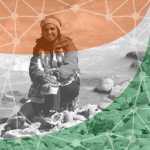 5 star · Oct 4, 2015 · The best tour operators for Kailash Manasarovar yatra for anyone. No words to thank the whole team for all their efforts in making this yatra a memory for a lifetime for all of us. Thank you team of Kailash Journeys (P) Ltd. - Vani Satyananda and Raju L Kanchibhotla
View this Review on Facebook
5 star · Oct 4, 2015 · The best tour operators for Kailash Manasarovar yatra for anyone. No words to thank the whole team for all their efforts in making this yatra a memory for a lifetime for all of us. Thank you team of Kailash Journeys (P) Ltd. - Vani Satyananda and Raju L Kanchibhotla
View this Review on Facebook
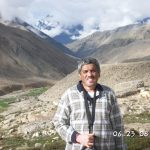 Dear Mr. Rajan, We went to Kailash yatra with your company on May 28...All the Sherpas you sent us with yatra were very good and friendly and tried to do all their best in difficult conditions at high altitude. Food prepared was good. We had wonderful experience of having Jain Pooja with Gurudev Shri Manak Muniji. We will recommend your company to others when they want to go to Kailash/Mansarovar Yatra. See Pictures
View this Review on Facebook
Dear Mr. Rajan, We went to Kailash yatra with your company on May 28...All the Sherpas you sent us with yatra were very good and friendly and tried to do all their best in difficult conditions at high altitude. Food prepared was good. We had wonderful experience of having Jain Pooja with Gurudev Shri Manak Muniji. We will recommend your company to others when they want to go to Kailash/Mansarovar Yatra. See Pictures
View this Review on Facebook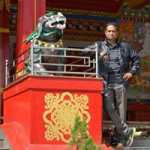 5 star · September 21, 2014 · The arrangements made by Kailash Journeys were excellent , especially the cook and sherpas did a commanding job .
This is the 2nd time I am engaged with them , last year may 21.05.13 to 30.05.13 also they did a fabulous job , that's why I booked this year also, with the grace of Almighty , I and my friend M S Puviyarasu completed the full parikrama ,God with us it seems absolutely easy , we peacefully and happily trekked all the 3 days , night stay in both Dherapuk and Zutulupuk were nice , morning tea/coffee and breakfast came to the room itself , hot Water was provided for brushing and face washing , over all the experience was wonderful !!!
Thanks a lot Mr.Rajan for everything ...
Loving you so much ...
Peacefully yours ...
S M Bega Raaj .
One important tip to all the travellers ,
Please book your return tickets at least 2 days after completion of the tour , since weather delays are expected .
View this Review on Facebook
5 star · September 21, 2014 · The arrangements made by Kailash Journeys were excellent , especially the cook and sherpas did a commanding job .
This is the 2nd time I am engaged with them , last year may 21.05.13 to 30.05.13 also they did a fabulous job , that's why I booked this year also, with the grace of Almighty , I and my friend M S Puviyarasu completed the full parikrama ,God with us it seems absolutely easy , we peacefully and happily trekked all the 3 days , night stay in both Dherapuk and Zutulupuk were nice , morning tea/coffee and breakfast came to the room itself , hot Water was provided for brushing and face washing , over all the experience was wonderful !!!
Thanks a lot Mr.Rajan for everything ...
Loving you so much ...
Peacefully yours ...
S M Bega Raaj .
One important tip to all the travellers ,
Please book your return tickets at least 2 days after completion of the tour , since weather delays are expected .
View this Review on Facebook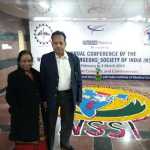 5 star · Oct 1, 2015 · Dear MrRajan, We had been with your team for Kailash Mansarovar yatra from 14th sept.2015.This difficult, strenuous yatra was made so comfortable by your team esp. Mr Nimma,Sherpa Dorjee& Arjun that in fact it became a pleasant yatra.Pl.convey our blessings to all of them. I would like to go again with your team next year. Dr. CBSinha & Dr.Renuka Sinha. Ranchi (Jharkhand)
phone: 9334720065
View this Review on Facebook
5 star · Oct 1, 2015 · Dear MrRajan, We had been with your team for Kailash Mansarovar yatra from 14th sept.2015.This difficult, strenuous yatra was made so comfortable by your team esp. Mr Nimma,Sherpa Dorjee& Arjun that in fact it became a pleasant yatra.Pl.convey our blessings to all of them. I would like to go again with your team next year. Dr. CBSinha & Dr.Renuka Sinha. Ranchi (Jharkhand)
phone: 9334720065
View this Review on Facebook September 14, 2015 · WE ARE VERY MUCH THANKFULL TO KAILASH JOURNEYS (P) LTD.
OUR DEZIRE IS COMPLETED WITH OUT ANY RISK
WE HAD AN WONDERFUL TRIP WITH THEIR SUPPORT THROUGHT THE JOURNEY
WE PERFORM PARIKRAMA AND HOLY BOTH IN SAROVAR EXCELLENT
M.BUTCHI RAJU
VISAKHAPATNAM
9912225733
View this Review on Facebook
September 14, 2015 · WE ARE VERY MUCH THANKFULL TO KAILASH JOURNEYS (P) LTD.
OUR DEZIRE IS COMPLETED WITH OUT ANY RISK
WE HAD AN WONDERFUL TRIP WITH THEIR SUPPORT THROUGHT THE JOURNEY
WE PERFORM PARIKRAMA AND HOLY BOTH IN SAROVAR EXCELLENT
M.BUTCHI RAJU
VISAKHAPATNAM
9912225733
View this Review on Facebook
 July 25, 2013 - The tour operator is very good. He himself, his father are gentle and sober people. Their behavior and arrangement was not like a businessman, but they had made all the arrangements for all the yatris with lots of care
Their stay arrangement at Kathmandu and all other places was very good. They sent 9 persons including nepali guide for a group of 47 yatris which was very good and all the sherpas including cook were very helpful and caring, especially for the senior citizens. The food quality and other supplies like breakfast were very good. The porter which nepali guides provided were also very caring.
What I could know from the other yatris (my son who went in 2012) and the internet that we were very lucky that we got good sherpas and good porters. My impression is that without such good people and arrangement, it is not very easy to complete such difficult and tiring yatra.
I congratulate Mr Rajan and his father for making our life achievement feasible and comfortable. The amount which the operator is charging is very reasonable as compared to many operators. I would like to go for another yatra in 2014 through Kailash Journeys Pvt Ltd. At the end I can say that the general opinion of most of the fellow yatris was very good about the operator and his arrangements.
The only problem was regarding the toilet in the Tibet/China side, which is beyond the control of the operator.
We both (Dr A K Tiwari – 66yrs and Dr Mrs R Tiwar-65 yrs) give ashirvad to Mr Rajan, his father and Mr Sagar Acharya (Sales Manager) due to whom at this age, we could conveniently and happily fulfill our life long desire.
Read More View this Review on Facebook
July 25, 2013 - The tour operator is very good. He himself, his father are gentle and sober people. Their behavior and arrangement was not like a businessman, but they had made all the arrangements for all the yatris with lots of care
Their stay arrangement at Kathmandu and all other places was very good. They sent 9 persons including nepali guide for a group of 47 yatris which was very good and all the sherpas including cook were very helpful and caring, especially for the senior citizens. The food quality and other supplies like breakfast were very good. The porter which nepali guides provided were also very caring.
What I could know from the other yatris (my son who went in 2012) and the internet that we were very lucky that we got good sherpas and good porters. My impression is that without such good people and arrangement, it is not very easy to complete such difficult and tiring yatra.
I congratulate Mr Rajan and his father for making our life achievement feasible and comfortable. The amount which the operator is charging is very reasonable as compared to many operators. I would like to go for another yatra in 2014 through Kailash Journeys Pvt Ltd. At the end I can say that the general opinion of most of the fellow yatris was very good about the operator and his arrangements.
The only problem was regarding the toilet in the Tibet/China side, which is beyond the control of the operator.
We both (Dr A K Tiwari – 66yrs and Dr Mrs R Tiwar-65 yrs) give ashirvad to Mr Rajan, his father and Mr Sagar Acharya (Sales Manager) due to whom at this age, we could conveniently and happily fulfill our life long desire.
Read More View this Review on Facebook Dear Rajan,We had great Helicopter Yatra organised very well. Accommodation and toilet facilities have to be improved on China side this has to be taken on priority from Indian govt. & Nepal govt. Otherwise trip was good.
View this Review on Facebook
Dear Rajan,We had great Helicopter Yatra organised very well. Accommodation and toilet facilities have to be improved on China side this has to be taken on priority from Indian govt. & Nepal govt. Otherwise trip was good.
View this Review on Facebook 5 star · September 30, 2014 · Vadali Prasad & Sasi from Bahrain ........
We performed Kailash Manasarovar Yatra September 2014. Batch # 22
By the grace of ‘ Bhole Baba ‘ our wish of ‘Kailash Parikrama’ is fulfilled with utmost satisfaction.
Trekking at landslide point is a wonderful experience.
Long journey with a group and sharing resources is very nice.
Kailash journeys did a good job throughout. All the arrangements were reasonably good within the framework. Sharpa team’s efforts and support are highly appreciated.
We thank Kailash journeys team for the task made successful.
Prasad.
View this Review on Facebook
5 star · September 30, 2014 · Vadali Prasad & Sasi from Bahrain ........
We performed Kailash Manasarovar Yatra September 2014. Batch # 22
By the grace of ‘ Bhole Baba ‘ our wish of ‘Kailash Parikrama’ is fulfilled with utmost satisfaction.
Trekking at landslide point is a wonderful experience.
Long journey with a group and sharing resources is very nice.
Kailash journeys did a good job throughout. All the arrangements were reasonably good within the framework. Sharpa team’s efforts and support are highly appreciated.
We thank Kailash journeys team for the task made successful.
Prasad.
View this Review on Facebook 4 star · September 20, 2014 · We were in Sept. Helicopter group. This arduous journey is not possible without the untiring efforts of your team especially on the Tibet side. The food was good & the team was ever ready to support & help. Hotel at Taklakot could be better, At Darchen lodge, we saw other travel agencies travellers looking at variety of KJ food arrangements & praising it. Request you to make your clients aware in advance about possible delays, weather interruptions, permit related issues & about hotels / lodges so travelers are mentally prepared before leaving for the journey
View this Review on Facebook
4 star · September 20, 2014 · We were in Sept. Helicopter group. This arduous journey is not possible without the untiring efforts of your team especially on the Tibet side. The food was good & the team was ever ready to support & help. Hotel at Taklakot could be better, At Darchen lodge, we saw other travel agencies travellers looking at variety of KJ food arrangements & praising it. Request you to make your clients aware in advance about possible delays, weather interruptions, permit related issues & about hotels / lodges so travelers are mentally prepared before leaving for the journey
View this Review on Facebook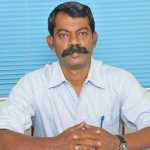 5 star · July 29, 2014 · Dear Team Kailash Journeys ,
I wish to thank the entire Kailash Journey staff and Nepali crew that made our Yatra to Kailash and Mansarover a very memorable and successful one .
A special mention of appreciation to the Nepali team led by Tiger and for his crew who worked tirelessly throughout the tour .. Hats of to them .
Saagar was at his best in co-ordinating our Helicopter trips to and from Kodari .. Thank you ..it was an amazing trip .
Thank you all for making this a memorable tour and yatra for me and my brother .
wishing you all the very best
Babu Chidambaram
Sivakasi
View this Review on Facebook
5 star · July 29, 2014 · Dear Team Kailash Journeys ,
I wish to thank the entire Kailash Journey staff and Nepali crew that made our Yatra to Kailash and Mansarover a very memorable and successful one .
A special mention of appreciation to the Nepali team led by Tiger and for his crew who worked tirelessly throughout the tour .. Hats of to them .
Saagar was at his best in co-ordinating our Helicopter trips to and from Kodari .. Thank you ..it was an amazing trip .
Thank you all for making this a memorable tour and yatra for me and my brother .
wishing you all the very best
Babu Chidambaram
Sivakasi
View this Review on Facebook 5 star · July 29, 2014 · I along with 32 persons successfully completed our tour to Muktinath, kailash- manasarovar during 03rd July 2014 to 20th July. Our Kailash-Manasarovar tour was possible only as a direct result of the dynamic leadership of Mr Rajan Shrestha. Inspite of several imponderables from the Chinese authorities, Kailash journeys could get our Group Visa and we could make Manasarovar on the Guru Poornima day.
2.Tour Guides provided by them are Excellent. They have taken care of all our requirements to the fullest extent. The Nepali guide, Sri lama Babu and his team have taken care of us during the entire Kailash- manasarovar trip. The Service rendered by them is outstanding. Sri Sujan, our Tibtan Guide and Sri lama babu are well experienced, resourceful and when ever a problem cropped up they are always ready with Plan B.
3. We had been accommodated at Hotel Mahadev, Kathmandu for couple of days. Staff of both the Hotel as well as Restaurant are very friendly, Cordial and cooperative and made all of us feel at Home. Food and Service are Excellent.
I would love to be associated with Kailash journeys pvt Ltd in the future .
rao Sunkesula
View this Review on Facebook
5 star · July 29, 2014 · I along with 32 persons successfully completed our tour to Muktinath, kailash- manasarovar during 03rd July 2014 to 20th July. Our Kailash-Manasarovar tour was possible only as a direct result of the dynamic leadership of Mr Rajan Shrestha. Inspite of several imponderables from the Chinese authorities, Kailash journeys could get our Group Visa and we could make Manasarovar on the Guru Poornima day.
2.Tour Guides provided by them are Excellent. They have taken care of all our requirements to the fullest extent. The Nepali guide, Sri lama Babu and his team have taken care of us during the entire Kailash- manasarovar trip. The Service rendered by them is outstanding. Sri Sujan, our Tibtan Guide and Sri lama babu are well experienced, resourceful and when ever a problem cropped up they are always ready with Plan B.
3. We had been accommodated at Hotel Mahadev, Kathmandu for couple of days. Staff of both the Hotel as well as Restaurant are very friendly, Cordial and cooperative and made all of us feel at Home. Food and Service are Excellent.
I would love to be associated with Kailash journeys pvt Ltd in the future .
rao Sunkesula
View this Review on Facebook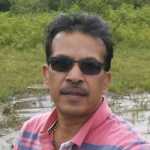 4 star · June 12, 2014 · A group of 28 of us from Bangalore had a memorable journey to Kailash Manso
rovar through kailash journeys. The guides at Kathmandu, Pokara Nepalgunj and at Taklakot very sincere and handled all the uncertainties very well.
View this Review on Facebook
4 star · June 12, 2014 · A group of 28 of us from Bangalore had a memorable journey to Kailash Manso
rovar through kailash journeys. The guides at Kathmandu, Pokara Nepalgunj and at Taklakot very sincere and handled all the uncertainties very well.
View this Review on Facebook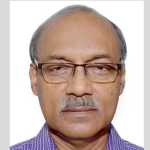 4 star · May 31, 2014 · Thanks to Kailash Journeys (P) Ltd. for arranging Kailash Manasorovor Yatra ( May 09 - May 20, 2014) in such a nice way with a very reasonable cost. Food was excellent, there was plenty of free mineral water. The staff members of the team were very friendly and always helpful. Although it is a tough journey, due to the special care taken by the Company, it was all along enjoyable.
e-mail: manoranjan.sarkar@saha.ac.in | Mobile: 0091 9830571269
View this Review on Facebook
4 star · May 31, 2014 · Thanks to Kailash Journeys (P) Ltd. for arranging Kailash Manasorovor Yatra ( May 09 - May 20, 2014) in such a nice way with a very reasonable cost. Food was excellent, there was plenty of free mineral water. The staff members of the team were very friendly and always helpful. Although it is a tough journey, due to the special care taken by the Company, it was all along enjoyable.
e-mail: manoranjan.sarkar@saha.ac.in | Mobile: 0091 9830571269
View this Review on Facebook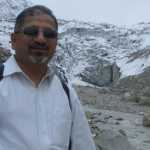 4 star · May 29, 2014 · We had a fantastic Kailash Mansarovar yatra with Kailash Journeys between 9th May 2014 and 21st May 2014. Given the limited infrastructure in Tibet, arrangement by Kailash Journeys was very good. Lambabu and Kancha, the leader and the staff member were excellent. Entire team took good care of us during the journey. Stay at Manas on full moon night and visit to Kailash north face to see Golden Kailash from Derapuk were most memorable.
View this Review on Facebook
4 star · May 29, 2014 · We had a fantastic Kailash Mansarovar yatra with Kailash Journeys between 9th May 2014 and 21st May 2014. Given the limited infrastructure in Tibet, arrangement by Kailash Journeys was very good. Lambabu and Kancha, the leader and the staff member were excellent. Entire team took good care of us during the journey. Stay at Manas on full moon night and visit to Kailash north face to see Golden Kailash from Derapuk were most memorable.
View this Review on Facebook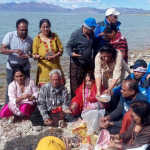 January 23, 2015: Had a wonderful trip with Kailash Journeys, Each and every place they provided good food, water even medicines for everyone in our group.They are making sincere efforts to make our Yatra a wonderful pilgrimage in our life time. Even though some people in our group often raised some issues regarding food, we enjoyed a lot - Sreeni Vaasan
January 23, 2015: Had a wonderful trip with Kailash Journeys, Each and every place they provided good food, water even medicines for everyone in our group.They are making sincere efforts to make our Yatra a wonderful pilgrimage in our life time. Even though some people in our group often raised some issues regarding food, we enjoyed a lot - Sreeni Vaasan
 Rajan....you did a good job taking care of my parents and my daughter...your response was quick and arrangements were good. Over all they had a good experience.....my mom has given her feedback to you on the sherpas provided, please see about it....I would definitely recommend all my friends and family about you Rajan.... and sorry for the late post .....:) take care....
View this Review on Facebook
Rajan....you did a good job taking care of my parents and my daughter...your response was quick and arrangements were good. Over all they had a good experience.....my mom has given her feedback to you on the sherpas provided, please see about it....I would definitely recommend all my friends and family about you Rajan.... and sorry for the late post .....:) take care....
View this Review on Facebook Dear Rajan and your team, Many, many thanks for organizing the trip to fulfill my one of the most important wish to visit Kailash Mansorver. It was wonderful, out of world experience. Your organization is very powerful and you have provided best services within limited resources available in interior Nepal and Tibet china. Your team member works very hard to make everyone's trip successful. Special thanks to your team at Nepalgunj and Takkalakot. Thanks to Sagar and Rajkumar.
View this Review on Facebook (Account Deactivated)
Dear Rajan and your team, Many, many thanks for organizing the trip to fulfill my one of the most important wish to visit Kailash Mansorver. It was wonderful, out of world experience. Your organization is very powerful and you have provided best services within limited resources available in interior Nepal and Tibet china. Your team member works very hard to make everyone's trip successful. Special thanks to your team at Nepalgunj and Takkalakot. Thanks to Sagar and Rajkumar.
View this Review on Facebook (Account Deactivated) Thanks Mr. Rajan for organizing the trip. It was very well managed and they took care of us very well. Special thanks to the Nepali Sherpas that Kailash Journey had arranged for us, were very good and took really good care of us without. It is a difficult journey and it wouldn't have been possible without the them.
View this Review on Facebook (Account Deactivated)
Thanks Mr. Rajan for organizing the trip. It was very well managed and they took care of us very well. Special thanks to the Nepali Sherpas that Kailash Journey had arranged for us, were very good and took really good care of us without. It is a difficult journey and it wouldn't have been possible without the them.
View this Review on Facebook (Account Deactivated) Very good effort in limited resources. Kailash trip at present is not leisure trip. We enjoyed divine presence at the best available facilities provided by Kailash journeys. The food, Hotels in Kathmandu and your team are very excellent. Recommended to Shiva followers.
View this Review on Facebook
Very good effort in limited resources. Kailash trip at present is not leisure trip. We enjoyed divine presence at the best available facilities provided by Kailash journeys. The food, Hotels in Kathmandu and your team are very excellent. Recommended to Shiva followers.
View this Review on Facebook Dear Rajan, We undertook 28 May 13 KM Yatra organised by your company. We really enjoyed every moment of our yatra and were delighted to have wonderful darshan of Mansarovar & Kailash. your ever smiling team of Sherpas took a lot of care & attention of everyone. mr Lama Babu, the head Sherpa was indeed excellent. It was indeed a very memorable trip, which will linger in our memories for long. Our best wishes for all the future tours. With warm regard to you & your team. Pankaj Misra- Lucknow
View this Review on Facebook
Dear Rajan, We undertook 28 May 13 KM Yatra organised by your company. We really enjoyed every moment of our yatra and were delighted to have wonderful darshan of Mansarovar & Kailash. your ever smiling team of Sherpas took a lot of care & attention of everyone. mr Lama Babu, the head Sherpa was indeed excellent. It was indeed a very memorable trip, which will linger in our memories for long. Our best wishes for all the future tours. With warm regard to you & your team. Pankaj Misra- Lucknow
View this Review on Facebook we performed yatra successfully.Management of Kailash journey was very good. we thanks for this to Rajan and his father . place of Mansarovar and Kailash mount was so nice that cant be expressed.
View this Review on Facebook
we performed yatra successfully.Management of Kailash journey was very good. we thanks for this to Rajan and his father . place of Mansarovar and Kailash mount was so nice that cant be expressed.
View this Review on Facebook We three couples of Rajasthan completed this yatra from 19th may to 31st may.We appreciate very much to Kailash Journey co,.We got very pleasure in this yatra .All arrangements were well planned.We did not get any trouble in this yatra. Place of Mansarovar and Kailash was so nice that it can not be expressed.We thanks to Mr., Badri and Mr,Rajan For this Yatra.
View this Review on Facebook
We three couples of Rajasthan completed this yatra from 19th may to 31st may.We appreciate very much to Kailash Journey co,.We got very pleasure in this yatra .All arrangements were well planned.We did not get any trouble in this yatra. Place of Mansarovar and Kailash was so nice that it can not be expressed.We thanks to Mr., Badri and Mr,Rajan For this Yatra.
View this Review on Facebook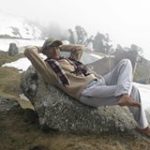 I had the privilege of Kailash Mansarovar journey by air route through www.Kailashjourneys.com from 8th-19th June , It was a very professionally managed trip by the operator . I salute the Nepali Sherpas and people in general for their kindness and very helpful nature in taking. Great customer service .....Keep it up !! When I come next time , it will be Kailash Journeys Pvt Ltd only.
View this Review on Facebook | Another Review on Facebook
I had the privilege of Kailash Mansarovar journey by air route through www.Kailashjourneys.com from 8th-19th June , It was a very professionally managed trip by the operator . I salute the Nepali Sherpas and people in general for their kindness and very helpful nature in taking. Great customer service .....Keep it up !! When I come next time , it will be Kailash Journeys Pvt Ltd only.
View this Review on Facebook | Another Review on Facebook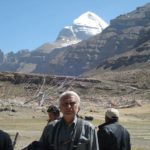 5/5 Rating. Thanks to Kailash Journey and Thanks to Dear Rajan & his company for his well co-ordinate effort for our Kailash Mansarovar Journey (25th & 26th May.2013). Good Food , comfortable stay , Transportation - all were good. Great Customer Service.
View this Review on Facebook
5/5 Rating. Thanks to Kailash Journey and Thanks to Dear Rajan & his company for his well co-ordinate effort for our Kailash Mansarovar Journey (25th & 26th May.2013). Good Food , comfortable stay , Transportation - all were good. Great Customer Service.
View this Review on FacebookSocial Share
Our Office
Nepal Head Office
Kailash Journeys Pvt. Ltd.
Thamel, Kathmandu 44600, Nepal
+977-9801100366 | India +91-8377929897
support@KailashJourneys.com
India +91-8377929897

